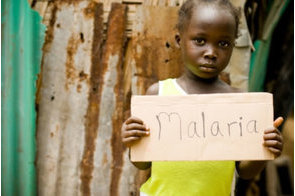Killing cancer

Summary
How to fight the epidemic of cancer in low- and middle-income countries.
Many years back, in low- and middle-income countries (LMICs), especially in Africa and Asia, cancer was thought to be a strange illness that only affected the rich and influential people. This notion was backed by poor access to diagnosis and difficulty in accessing healthcare in LMICs, mostly in rural or remote locations where many people died from cancer related diseases without anyone knowing it.
Late-stage presentation, partly because of poor awareness about the disease and partly due to the high cost of cancer treatment, is also very common in these countries. The reverse is the case in high income countries where comprehensive diagnosis and treatment are available to more than 90 percent of the population. According to the World Health Organisation (WHO), less than 15 percent of the population in low-income countries have access to detailed cancer diagnosis and treatment.
Africa recorded the lowest occurrence of new cancer cases globally in 2020, followed by Asia, Oceania, Latin America, and the Caribbean; North America and Europe had the highest incidence rate. However, despite the low incidence rate in Africa compared to those of western countries, the continent recorded the highest mortality rate from cancer, closely followed by Asia. North America and Oceania had the lowest death rate. In Nigeria for example, according to the Global Cancer Observatory report, 124,815 new cases were reported in 2020 and 78,899 people died from the disease in the same year.
Clearly, there is a huge gap in cancer care in developing countries of Africa and Asia. That is why the world Cancer Day campaign this month is geared towards closing the cancer care gap, improving access to quality cancer care for all globally and addressing barriers hindering people all over the world from getting adequate care and treatment, while creating more awareness of the disease, its prevention and detection.
Cancer is a broad term that refers to a group of over 200 genetic diseases that affect specific organs or parts of the body. These diseases have a common characteristic, which begins with damage to a cell. Once the damaged cell or cells escape the body’s detection and destruction mechanisms, it begins to multiply itself at a high rate, resulting in tumour formation. Based on my research experience working with cancer cells, which is similar to those of other experts, cancer cells are highly proliferative and invasive. These characteristics make effective treatment difficult when presented at advanced stages of the disease.
Generally, environmental factors and genetics play key roles in cancer development. Damaged genes that increase cancer risks can be passed from parent to offspring but these accounts for only 5-10 percent of cancer cases. According to experts, environmental factors, especially lifestyle, strongly influence cancer development. One-third of death from cancer are lifestyle related: their causes could be linked to smoking or tobacco use, high body mass index, alcohol intake, poor diet and lack of physical activity. Tobacco use – by smoking, snuffing or chewing – increases the risk of many cancers including lungs, oesophagus, voice box, mouth, throat, bladder, kidney, liver, pancreas, and stomach cancers amongst others. Cancers linked to alcohol use include cancers of the upper digestive tract – mouth, throat, voice box, oesophagus – liver, probably colon, rectum, breast cancers and possibly lungs cancer, etc.
Apart from lifestyle, infectious agents such as hepatitis and human papillomavirus (HPV) have been reported to be responsible for about 30 percent of cancer cases in LMICs. Another environmental contributor to cancer development is exposure to radiations. For example, excessive ultraviolet radiation from the sun can increase the risk of skin cancer. Notwithstanding, sunlight is also a good source of vitamin D for the body. Other high-energy radiations that can damage genetic materials and cause cancer are x-rays, gamma rays, beta and alpha particles and neutrons.
Based on advances in research, detection through screening and early diagnosis, death as a result of cancer can be prevented. Although there have been tremendous improvements in cancer detection and treatment over the years, significantly increasing the chances of survival and greatly lowering death rate from the disease, till date our best approach to defeat cancer is through prevention. Cancer is largely a preventable disease. Two most relevant ways of preventing cancer from a lifestyle approach are making healthy food choices and avoiding exposure to carcinogens (cancer causing agents).
Healthy Food Choices
No single food has been proven to specifically prevent or treat cancer in humans, but diet plays a major role in reducing or increasing cancer risk. Many foods within our reach have the ability to prevent or slow down processes that could eventually lead to cancer development. These foods including vegetables, fruits, and cereals; they are rich in nutrients such as vitamins, minerals and fibre that are required for good health.
Some foods help to maintain healthy body mass index while some others can cause unhealthy weight gain which is a predisposing factor to several cancers. Excess body fat from consuming fatty foods increases the risk of many cancers including colorectal, kidney, and pancreatic cancer. Foods that are high in fat may also increase the risk of breast and prostate cancers, simply because of their tendency to increase the risk of obesity. More so, overweight and obese conditions can be a result of excessive intake of sugar.
Diets that are high in red and processed meats could probably increase the risk of colorectal cancer and possibly breast and prostate cancer. And diets high in salt, such as salt-preserved or flavoured foods, do not only trigger high blood pressure but also have been linked to increased risk of stomach cancer. Flavouring foods with herbs and spices and reducing salt intake are useful in limiting the risk of stomach cancer. It is recommended that daily salt intake should not exceed one teaspoon (5g). Food does not have to taste salty for it to be high in salt.
The practice of smoking or cooking foods in direct flame in grilling and making of barbecue produces carcinogenic compounds on food. Reducing the consumption of such foods and removing burnt and blackened portions from the foods before eating is advisable.
Plant-based vegetables, herbs and spices and fruits also contain bioactive phytocompounds, mostly antioxidants that can help to rid the body of harmful toxins capable of damaging body cells and causing chronic inflammation in organs. These protective compounds are present in varying quantities and in different forms in different foods. This is why it is often recommended that we consume diverse diets of plant origin. A diverse diet is key to safeguarding the body against serious diseases – cancer, heart diseases, stroke, and diabetes. Five or more servings of raw vegetables, green vegetables, tomatoes, berries, and so on can reduce the risk of cancer by 20 percent.
General Warning Signs
Some of the symptoms that could point to cancer or tumour formation may also be pointers for mild illnesses. But when painful body changes linger for more than a week or two and do not respond to regular treatment, it is important to consult a medical doctor to be sure. Early presentation in this case creates room for detection if it happens to be a serious situation, for example, cancer. Signs to look out for include a sore or bruise that has refused to heal in any part of the body, an unusual bleeding or discharge, continuous indigestion, a thickening in the breast or any other part, noticeable discomforting difference in bowel or bladder habit that cannot be traced to any particular cause and so on. Because some cancers get to the advanced stages before noticeable symptoms appear, it is advisable to go for cancer screening at least once in three years.
What Can Governments Do?
‘Prevention is better than getting a cure’ and ‘health is wealth’ are pertinent aphorisms. While individuals should adjust their lifestyles towards cancer prevention and reduce exposure to carcinogens, governments in developing countries with high cancer death rates must strengthen policies to reduce to the lowest level the release of harmful substances into the atmosphere. As earlier mentioned, environmental toxicants can initiate toxicities in various organs of the body and eventually cause irreversible genetic changes.
Outdoor air pollution due to emissions from industries, power generation, indiscriminate burning must be prohibited as these activities pose serious public health risks that could culminate in cancer.
Also, government agencies should collaborate with non-governmental organizations and private bodies to promote cancer awareness, screening, detection and treatment options especially in underserved communities.
Mojisola Karigidi, PhD, a Financial Nigeria Columnist, is a Nigerian biochemist and the founder and product developer at Moepelorse Bio Resources. She is also a Global Innovation Through Science and Technology (GIST) awardee, and an Aspen New Voices fellow.
Related
-
How to fight antimicrobial resistance
The parasite that causes malaria is developing resistance to artemisinin, which forms the basis for the most effective ...
-
Defeating malaria requires new approaches
Although the global death toll caused by malaria fell by almost 40% between 2000 and 2015, there has been slow progress in ...
-
New documentary highlights challenges of people living with HIV
According to the Joint United Nations Programme on HIV/AIDS, nearly 37 million people are currently HIV-positive.







